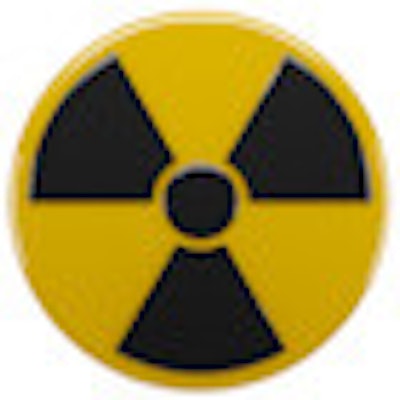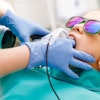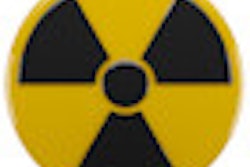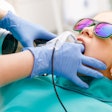
Two studies published last week in the Archives of Internal Medicine found that medical multislice computed tomography (CT) scans cause much more cancer than previously estimated. They also give impetus to efforts dental organizations have undertaken to reduce patients' exposure to x-rays.
In one of the two studies (December 14/28 2009, Vol. 169:22, pp. 2071-2077), researchers estimated that 4,000 people would suffer cancer from CT head scans performed in 2007 alone. The study involved a collaboration of researchers from the National Cancer Institute, Johns Hopkins University, Kyung Hee University, the American College of Radiology, and the New Mexico Veterans Administration Healthcare System.
Head scans are less likely to cause cancer than scans of other body parts, and the studies did not explicitly compare older estimates of the health risks of head scans to the new data. But the second study, published in the same issue of the Archives (pp. 2078-2086), found effective radiation doses from CT on other body parts to be between 66% and 400% higher than previous estimates.
In the second study, researchers from the University of California, San Francisco; Kyung Hee University; Johns Hopkins University; the National Cancer Institute; and the University of Washington, Seattle, visited four institutions around the San Francisco Bay Area to measure the actual radiation delivered by CT scans. They found that scans of the head deliver a median effective dose of 2,000 microSv, but the effective dose ranged from 300 microSv to 6,000 microSv. (Effective dose takes into consideration the vulnerability of the tissue being x-rayed as well as the radiation it absorbed.)
Although head scans cause less cancer than other types of scans, the researchers found that every 10,000 scans would cause 2.3 cancers. And the risk is much higher for some populations than others, they wrote. For example, every 4,360 head scans on 20-year-old females would cause one cancer, they estimated. They also found large variations in the radiation dose delivered from one center to another, even though the centers were using the same equipment, suggesting that the radiographer's technique makes a big difference.
Cone-beam CT safer?
The concerns raised by these papers are important for dentistry, said Allan G. Farman, B.D.S., Ph.D., M.B.A., DS.c., a professor of radiology and imaging science at the University of Louisville School of Dentistry, in an e-mail to DrBicuspid.com.
"It makes use of low-dose cone-beam CT more important as an alternative to medical multislice CT when 3D imaging is needed," he said. Cone-beam CT uses only about 100 microSv per head scan.
Last week, the American Academy of Oral and Maxillofacial Radiology (AAOMR) agreed to collaborate with the American Association of Endodontists on formal guidelines for using cone-beam CT, said Dr. Farman, who is currently president of the AAOMR. In addition, the AAOMR is already working on a similar document with the American Association of Orthodontists.
Though the organizations have not yet finished this work, Dr. Farman offered his own opinion about when dentists should use medical multislice CT, which is better at identifying the surfaces of soft tissue that is not exposed to air, he said. For this reason, he advised, it works better in diagnosing many types of oral pathology and is also more effective in imaging the temporomandibular joint when information about soft tissue is needed.
"Cone-beam CT is better where only hard tissues need imaging, such as implant preplacement assessment, dental impactions, and assessment of craniofacial and surgical orthodontic analysis," said Dr. Farman. "High-resolution cone-beam CT is useful for evaluation of endodontic failure in many instances."
In general, dentists seem to be migrating towards cone-beam CT and away from medical multislice CT, said Stuart C. White, D.D.S., Ph.D., a professor emeritus of dental radiology at the University of California, Los Angeles, though he noted that he has not seen any actual data on such a trend.
And he said the estimates of cancer risk used in the Archives of Internal Medicine studies correspond well to previous estimates calculated specifically for dentistry. The Archives studies are important because they may focus attention on a risk that is too often overlooked. "Their work points out a need we have as a profession to develop selection criteria for identifying the characteristics of people most likely to benefit from x-ray examinations in order to reduce unnecessary examinations," he said.
Exposure from common dental x-ray examinations
|
||||||||||||||||
| *Journal of the American Dental Association, September 2008, Vol. 139:9, pp. 1237-1243 **Oral Surgery, Oral Medicine, Oral Patholology, Oral Radiology, and Endodontics, July 2008, Vol. 106, pp. 106-114 |
Although cone-beam CT uses less radiation than medical multislice CT, it can cause cancer too, Dr. White pointed out. "I think there is a real risk. In my opinion some dentists are overusing it. There are some who are using it on all their patients," he said.
Dentists shouldn't use ionizing radiation unless there is a "specific likelihood" that the exposure will provide information useful in a diagnosis or treatment, Dr. White said.
He suggested several specific uses for cone-beam CT. "I think most implants should be planned with cone-beam, to aid in optimal implant placement treatment planning and to avoid complications. For example, an implant placed into the mandibular nerve may cause permanent paresthesia of the lip."
In addition, endodontists should use it if they run into a problem, such as persistent pain that they cannot figure out, as cone-beam imaging may assist in identifying cracked teeth or unseen periapical disease. "And there's a subset of impacted third molars which are very close to the nerve, so the surgeons need all the information they can get to improve their opportunity to remove these teeth without nerve damage," he said.
Each 100 microSv to head region leads to 1 cancer for the following number of scans
|
||||||||||||||||||
| Adapted from Archives of Internal Medicine, December 14/28 2009, Vol. 169:22, pp. 2078-2086. Table courtesy of Stuart C. White, D.D.S., Ph.D. | ||||||||||||||||||
The ADA has developed similar guidelines. As a general principle, Dr. White said, use the lowest-dose modality that will provide the information needed.



















